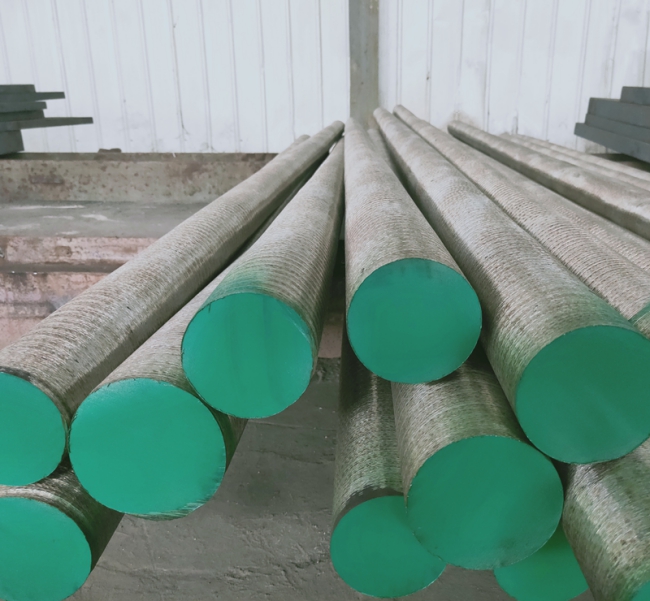There is cold work die steels and hot work die steels on the market, so what is the difference between these two sheets of steel? The tool steel supplier will show you the difference between cold work die steel and hot work die steel.
First, cold work tool steel focuses on hardness and wears resistance. High carbon content, alloying elements mainly to increase hardenability and improve wear resistance. Cold work tool steel includes the dies for punching and cutting (blanking punching dies, trimming dies, punches, scissors), cold heading dies and cold extrusion dies, bending dies and wire drawing dies.
Hot work tool steel has appropriate hardness requirements, focusing on red hardness, thermal conductivity, and wear resistance. Therefore, the carbon content is low, and the alloying elements are mainly used to increase hardenability, improve wear resistance, and red hardness.

Second, working conditions and performance requirements
1. When cold work tool steel is working, due to the relatively large deformation resistance of the processed material, the working part of the die bears great pressure, bending force, impact force, and friction force. Therefore, the reason for the normal scrapping of cold work molds is generally worn, and there are also premature failures due to fracture, collapse, and deformation.
Compared with cutting tool steel, cold work tool steel has many things in common. The mold is required to have high hardness and wear resistance, high bending strength, and sufficient toughness to ensure the smooth progress of the stamping process. The difference is that the mold shape and processing technology are complex, and the friction area is large, and the possibility of wear is large, So it is difficult to grind. Therefore, it is required to have a higher wear-resistant mold with a large impact force when working, and because the shape is complex and easy to produce stress concentration, higher toughness is required; the mold size is large and the shape is complex, so higher hardenability, Less deformation and cracking tendency. In short, cold work tool steel requires higher hardenability, wear resistance, and toughness than cutting tool steel, but has lower or basically no requirements in terms of red hardness (because it is cold formed), so Correspondingly, some steel grades suitable for cold work molds have been formed.
2. Hot work tool includes three types: hammer forging dies, hot extrusion die, and die casting die. The main feature of the working conditions of the hot work mold is the contact with the hot metal, which is the main difference from the working conditions of the cold work mold.
(1) The surface metal of the cavity is heated. Generally, when the hammer forging die is working, the surface temperature of the die cavity can reach above 300-400℃, and the hot extrusion die can reach above 500-800℃; the temperature of the die-casting die cavity is related to the type of die-casting material and the pouring temperature.
(2) Thermal fatigue (cracking) of the surface metal of the cavity. The working characteristic of the hot mold is intermittent, each time the hot metal is formed, the surface of the mold cavity must be cooled with water, oil, air, and other media.
Copyright:@2020-2021
Comments Please sign in or sign up to post.
0
0 of 500 characters used